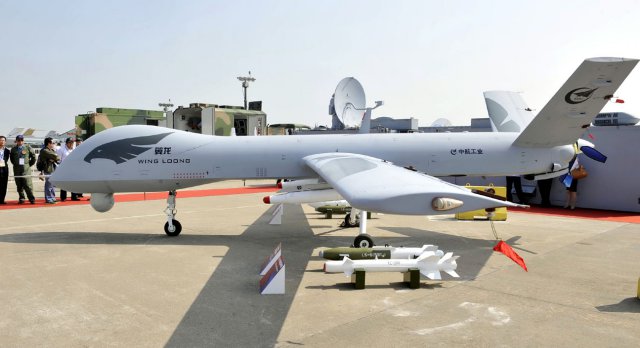 A report by the Project 2049 Institute contends that Beijing has made considerable strides in its development of unmanned aircraft systems (UAS).
A report by the Project 2049 Institute contends that Beijing has made considerable strides in its development of unmanned aircraft systems (UAS).
“The Chinese People’s Liberation Army (PLA) appears to be fielding operational UAS capabilities that could have significant future regional security implications,” says the 15-page report.
“In order to support China’s efforts to become a world-class leader in unmanned technology, the PLA has developed an extensive and organisationally complex UAS infrastructure over the past decade.”
It estimates that China fields 280 UAS, with this number to “increase significantly” in the coming years.
The authors sourced information for the report mainly from materials that are publicly available in Chinese. Aside from detailing the various organisations involved in China’s development of UAS, the report forecasts possible UAS tactics, particularly the future role of UAS in a conflict with the USA.
“This should be of particular concern to the US Navy because according to several military-technical materials reviewed for this study, PLA operational thinkers and scientists envision attacking US aircraft carrier battle groups with swarms of multi-mission UAS in the event of conflict,” says the report.
Chinese thinkers see long-range UAS serving a number of roles in any anti-access/aerial denial campaign against the USA. Early in the conflict, decoy UAS would be deployed, tricking US fighters and warships into expending valuable anti-aircraft missiles. This would be followed by waves of UAS equipped for electronic warfare, jamming communications and radar. Simultaneously, other UAS would mount kinetic attacks against both US airborne early warning & control aircraft and warships.
UAS would play an integral role in guiding cruise missiles and anti-ship ballistic missile (ASBM) attacks against US naval assets. Although the status of China’s DF-21D ASBM is unclear, it is a source of serious concern for US defence planners. The DF-21D would theoretically be able to strike a carrier (or other major warship) directly, or shower them with bomblets. A rain of high-explosive bomblets would be catastrophic on an aircraft carrier’s deck.
At the Airshow China in Zhuhai in 2010 and 2012, the China Aerospace Science and Industrial Corp stand showed a model of a large UAS designated the WJ-600. A mural in 2010 showed a WJ-600 attacking US Navy Arleigh Burke destroyers with anti-ship missiles, as well as guiding missiles from shore-based batteries.
“The PLA has developed one of the largest and most organisationally complex UAS programmes in the world,” says the report.
“This programme includes national-level organisations tasked with developing joint UAS mission requirements; a massive military-industrial design, research and development, and production infrastructure; and a growing number of operational UAS units spread across every service branch of the Chinese armed forces.”
A full copy of the report is available here.
Source: Flight Global

The US may dominate in the military field. However in a future war with the US,the Chinese will make use of non military assets for defence/attack. Dumping the US dollar will be agood example.
Yes I know China will be defeated but rather than let the US escape untouched by the ravages of war,this is one w ay. I think both sides have given serious thought to this and are devising ways and means to ramp up the pressure on the Chinese side . The US will of course try to mitigate its effects.
Hopefully the leaders in the US will give cognizance of this effect and not provoke China into war but you never know.A desperate US president will turn to war to divert attention
of the many problems facing his country. History is full of example of such leaders.